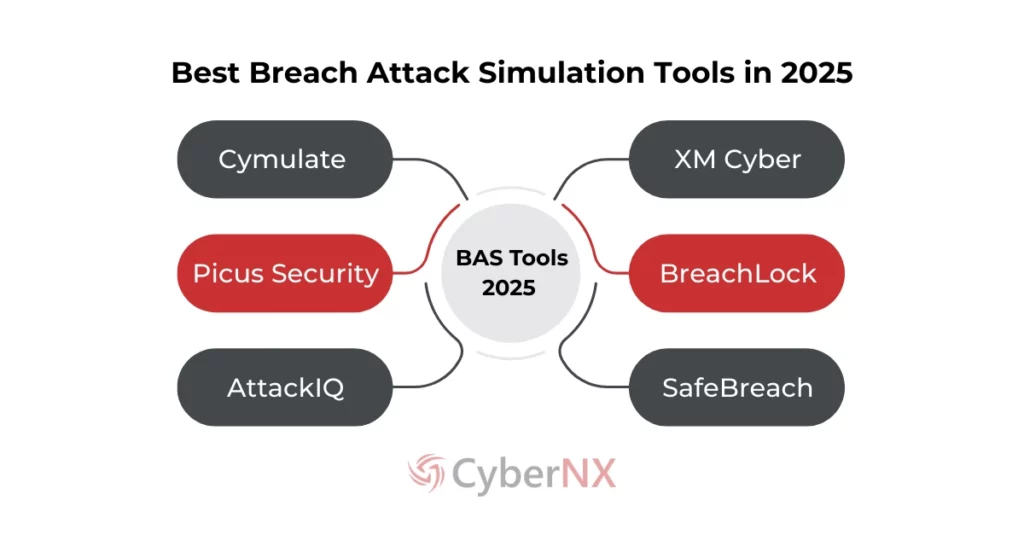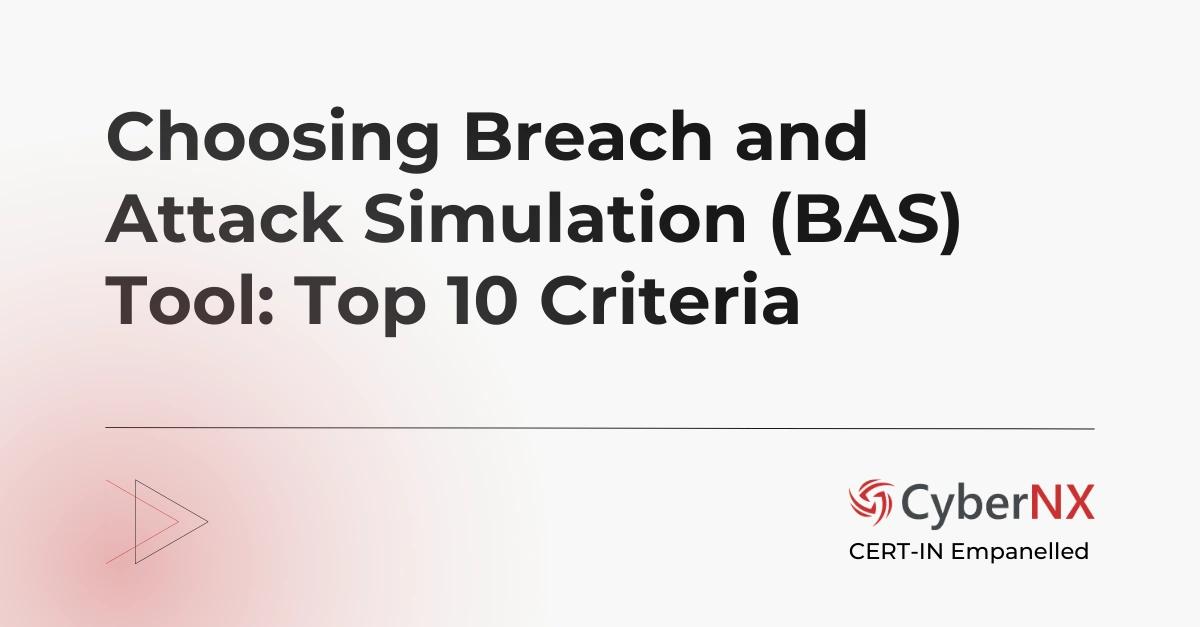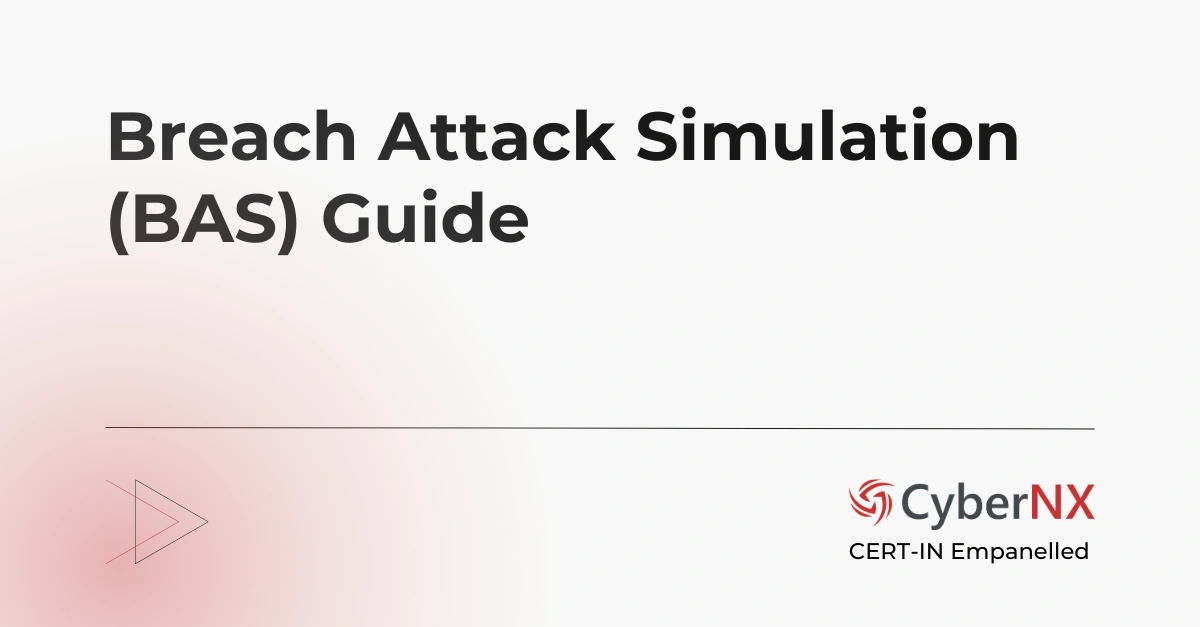Cybersecurity has changed. It’s no longer enough to simply react to attacks; you need to anticipate them. Breach and attack simulation represent a fundamental shift in cybersecurity strategy, moving from reactive defense to proactive offense. Our blog dives into the best Breach and Attack Simulation tools for 2025, helping you embrace this proactive approach and build a more resilient security posture.
Overview of Breach and Attack Simulation Tools
Breach and attack simulation tools are game-changers in modern cybersecurity. They allow you to simulate real-world cyberattacks on your own systems, identifying vulnerabilities before hackers do. Think of it as a cybersecurity fire drill. BAS tools create realistic attack scenarios, from phishing emails to ransomware attacks, and assess how your existing security controls would perform. This proactive approach is essential for staying ahead of the curve in today’s dynamic threat landscape.
Why are BAS tools critical in 2025?
The cyber threat landscape is constantly evolving. Attackers are using increasingly sophisticated techniques, from AI-powered malware to complex social engineering tactics. Traditional security measures, like firewalls and antivirus software, are no longer enough. In 2025, Breach and Attack Simulation tools are critical because they:
- Address Evolving Threats: BAS tools simulate the latest attack techniques, including ransomware, phishing, malware, and DDoS attacks.
- Enable Proactive Testing: They allow you to proactively identify vulnerabilities and weaknesses in your defenses before they are exploited.
- Provide Realistic Insights: BAS tools offer realistic simulations of real-world attacks, giving you a clear picture of your security posture.
- Improve Incident Response: By simulating attacks, you can train your security team and improve your incident response capabilities.
What to Look for in Breach and Attack Simulation Tools?
Always define what you want to achieve by opting for a BAS tool. Is it security control validation? Do you want to prioritize vulnerability prioritization? Or does you security team needs control efficacy comparison? Answers to such questions will help in choosing right breach and attack simulation tools.
Here are some more key features to consider:
- Realistic Attack Simulation: The tool should be able to simulate a wide range of realistic attack scenarios, mimicking the tactics and techniques used by real-world attackers.
- Comprehensive Coverage: Look for a tool that covers all critical areas of your infrastructure, including network, endpoints, applications, and cloud environments.
- Ease of Use and Integration: Breach and attack simulation tools should be easy to use and integrate with your existing security tools and workflows.
- Reporting and Analytics: Robust reporting and analytics are crucial for understanding the results of simulations and identifying areas for improvement.
- Scalability and Customization: The breach and attack simulation tools should be able to scale to meet your organization’s needs and allow for customization of attack scenarios.
For a more detailed breakdown of essential criteria, be sure to check out our guide on the Top 10 Criteria for Choosing the Right Breach Attack Simulation Tools.
Top 6 Breach and Attack Simulation Tools for 2025
Our experts have used their experience of handling these tools, did extensive research on platforms like G2 and talked to leaders in the industry to curate this list. We have narrowed down the list to top 6, which will help you make the decision fast. Here are the top breach and attack simulation tools for 2025:
Let’s elaborate on these Breach and Attack Simulation tools, providing more detail and context:
1. Cymulate
- Overview: Cymulate offers a comprehensive Breach and Attack Simulation (BAS) platform designed to assess and improve an organization’s security posture across a wide range of attack vectors. It goes beyond basic vulnerability scanning by emulating real-world attacks, from phishing campaigns and malware infections delivered via email, to web application exploits and network intrusion attempts. Cymulate aims to provide a holistic view of security effectiveness.
- Pros: Cymulate’s strengths lie in its ease of use, comprehensive attack coverage, and detailed reporting capabilities. The platform simplifies the process of launching simulations, analyzing results, and identifying areas for improvement. Its broad coverage ensures that organizations can test various aspects of their security infrastructure.
- Cons: While powerful, Cymulate can be a significant investment, making it potentially less accessible to smaller organizations with limited budgets.
- Best For: Cymulate is best suited for large enterprises with complex security needs and the resources to manage a comprehensive BAS program. Organizations with mature security teams and a focus on continuous improvement will find Cymulate particularly valuable.
2. Picus Security
- Overview: Picus Security specializes in simulating advanced persistent threats (APTs) and ransomware attacks, two of the most damaging and prevalent cyber threats facing organizations today. Picus focuses on emulating the tactics, techniques, and procedures (TTPs) used by sophisticated attackers, providing insights into an organization’s ability to defend against these advanced threats.
- Pros: Picus Security’s key advantage is its strong focus on advanced threats like APTs and ransomware. Its good integration capabilities allow it to work seamlessly with existing security tools, enhancing overall threat detection and response.
- Cons: Compared to some other breach and attack simulations tools, Picus Security may not be as comprehensive in its coverage of less sophisticated attack vectors.
- Best For: Picus Security is an excellent choice for organizations that are particularly concerned about APTs and ransomware and want a focused solution for testing their defenses against these specific threats.
3. AttackIQ
- Overview: AttackIQ provides a platform for continuous security validation. This means that organizations can regularly and automatically test their defenses, rather than relying on periodic assessments. AttackIQ emphasizes automation and provides a library of pre-built attack scenarios, making it easier to implement and manage ongoing testing.
- Pros: AttackIQ’s strengths include its focus on continuous testing, automated simulations, and robust reporting. The platform streamlines the process of validating security effectiveness over time.
- Cons: Managing a continuous security validation program can require significant resources, including dedicated personnel and expertise.
- Best For: AttackIQ is best suited for organizations that are committed to continuous security improvement and have the resources to manage a dynamic testing program.
4. XM Cyber
- Overview: XM Cyber takes a different approach compared to other breach and attack simulation tools. It focuses on identifying and prioritizing critical attack paths within an organization’s network. Rather than simply simulating individual attacks, XM Cyber maps out potential attack routes and highlights the vulnerabilities that pose the greatest risk. This helps organizations prioritize their remediation efforts.
- Pros: XM Cyber’s ability to identify critical attack paths and prioritize remediation efforts is a significant advantage. It helps organizations focus their resources on the most important vulnerabilities.
- Cons: Using XM Cyber effectively may require specialized expertise in network security and attack path analysis.
- Best For: XM Cyber is best suited for organizations with complex network infrastructures and a need to understand and mitigate their most critical attack paths.
5. BreachLock
- Overview: BreachLock offers a cloud-based BAS platform with a strong emphasis on ease of use. It’s designed to be accessible to organizations of all sizes, including small and medium-sized businesses (SMBs) that may not have dedicated security teams. BreachLock’s cloud-based approach simplifies deployment and management.
- Pros: BreachLock’s key advantages are its ease of use, cloud-based delivery, and affordability. It provides a user-friendly way for organizations to conduct BAS testing without requiring extensive technical expertise.
- Cons: While easy to use, BreachLock may not be as comprehensive in its coverage of attack vectors as some other enterprise-grade solutions.
- Best For: BreachLock is best suited for small and medium-sized businesses that need an affordable and easy-to-use BAS solution.
6. SafeBreach
- Overview: SafeBreach provides a platform for simulating attacks on both network and endpoints. It offers a broad range of attack scenarios, including malware, exploits, and social engineering tactics. SafeBreach emphasizes comprehensive coverage and integrates with a wide range of security tools.
- Pros: SafeBreach’s strengths include its comprehensive attack coverage, detailed reporting, and strong integrations with other security products.
- Cons: Setting up and managing SafeBreach can be a complex undertaking, requiring significant technical expertise.
- Best For: SafeBreach is best suited for large enterprises with mature security programs and the resources to manage a sophisticated BAS platform.
Conclusion
Choosing right breach and attack simulation tools is a critical decision. By carefully evaluating your needs and considering the factors outlined in this guide, you can select a solution that will help you proactively strengthen your defenses and stay ahead of the evolving cyber threat landscape. Remember, the best tool is the one that best fits your specific requirements and budget.
Choosing the right BAS tool can be complex. Our team of cybersecurity experts can help you assess your needs and select the best solution for your organization. Contact us today for breach and attack simulation services.





